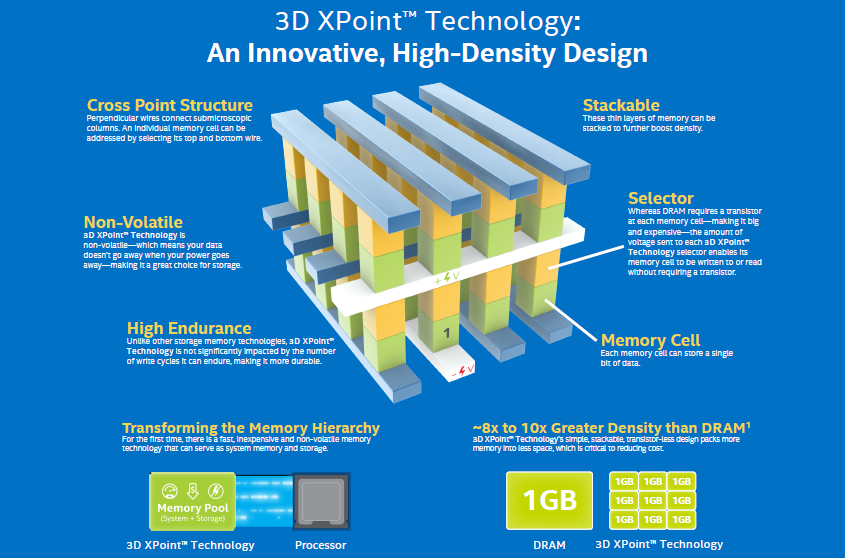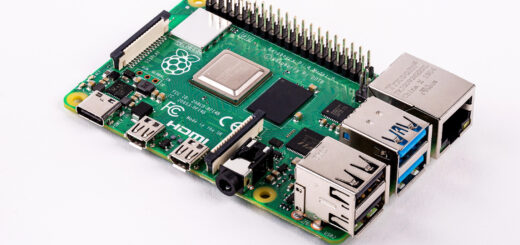Intel Optane, between myths and reality

In 2015, Intel announced a new technology that would’ve been able to replace RAM and Storage altogether: Intel Optane. Born from a joint effort with Micron, Optane was clearly an ambitious project, but it has remained shrouded in the darkness for a long time; until now. Fast forward to 2017, Optane is finally out with its first two products, will it stand the trial of fire?
What is Intel Optane? And 3D Xpoint?
Let’s start by saying that Optane is an entirely new type of memory using (at least for now) M2 form factor. Or rather, it is a new technology. The technology behind Intel Optane is called 3D XPoint (pronounced crosspoint) and has been created by Intel and Micron. 3D XPoint is a non-volatile technology (data is retained when there’s no power), this makes it similar to an SSD. However, at least for the moment, the only two available products are limited to 16GB and 32GB capacity, making it similar to a RAM module. Although Optane can be seen as a missing link between RAM and traditional storage, the benchmarks tell us a different story. As a matter of fact Optane is:
- Not as fast as RAM, but relatively cheaper.
- Much faster than SSD, but relatively more expensive.
The real strong point about Optane is latency that come close to 7-9 microseconds. Another important thing to look at is the endurance. SSD are damaged when there are many write operations and, with time and repetition, they wear out (although it’s not as bad as you think). Intel Optane has a strong endurance and doesn’t age as fast as SSD when written.
Optane requirements
Requirements for the Optane technology (the two released products) are quite strict, you will need:
- An Intel Core 7th generation CPU.
- A motherboard with Intel 200 series chipset.
- A motherboard with an M.2 slot.
- Windows 10 (Linux?).
Since Optane works strictly with software, there is a bit of uncertainty about other-than-Windows support.
Intel Optane performance comparison
Unfortunately, I have yet to be able to test this new technology by myself, so I looked at the benchmarks many great people posted around the Internet:
- Storage Review: Intel Optane Memory Review.
- Ars Technica: It performs like a hybrid disk.
- A Nand Tech: The Intel Optane Memory (SSD) Preview: 32GB of Kaby Lake Caching.
- LinusTechTips: Turbocharge your SSD for $40??
The general consensus is that Intel Optane delivers much less than expected but the technology does what it’s good at: caching. Optane (at least the two released products) is essentially a cache that stores frequently accessed data in order to deliver faster performance especially on boot times.
Between SSD and HDD, but faster than both?
According to benchmarks, an Optane+HDD setup performs much like an SSHD (a hybrid-drive with caching capabilities). But when it comes to an Optane+SSD setup, the benchmarks show there is almost no difference.
Large-scale Optane
At the moment, the only two products released by Intel are low-capacity Optane modules. But in the future, Intel will release high-capacity Optane-powered modules like the Intel Optane DC P4800X that will have a capacity of 375GB. Although that’s impressive, the module itself is quite pricey and aimed to the enterprise market.
Who should consider it
At the time of writing this article, the two products released by Intel are pretty much intended to be used as cache. So whoever wants to speed up a system equipped with an HDD (and the aforementioned requirements) without buying an SSD. Optane might not be on pair with SSD drives with capacity/speed but it delivers low-latency, affordable SSD-like performance. If you’re still using an hard disk drive and install an Optane module, you will surely have an SSD-like experience.
- 2020 A year in review for Marksei.com - 30 December 2020
- Red Hat pulls the kill switch on CentOS - 16 December 2020
- OpenZFS 2.0 released: unified ZFS for Linux and BSD - 9 December 2020










Recent Comments